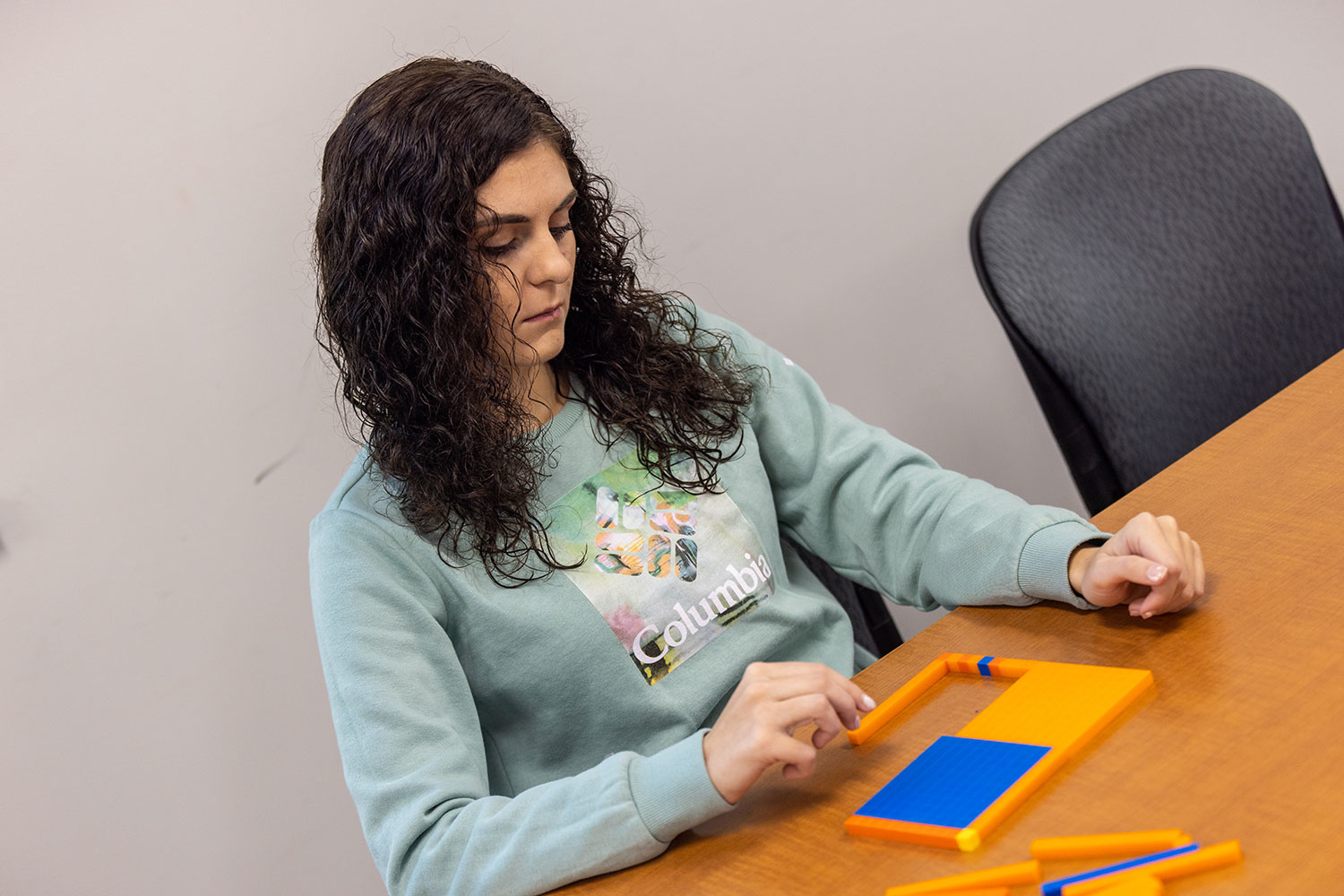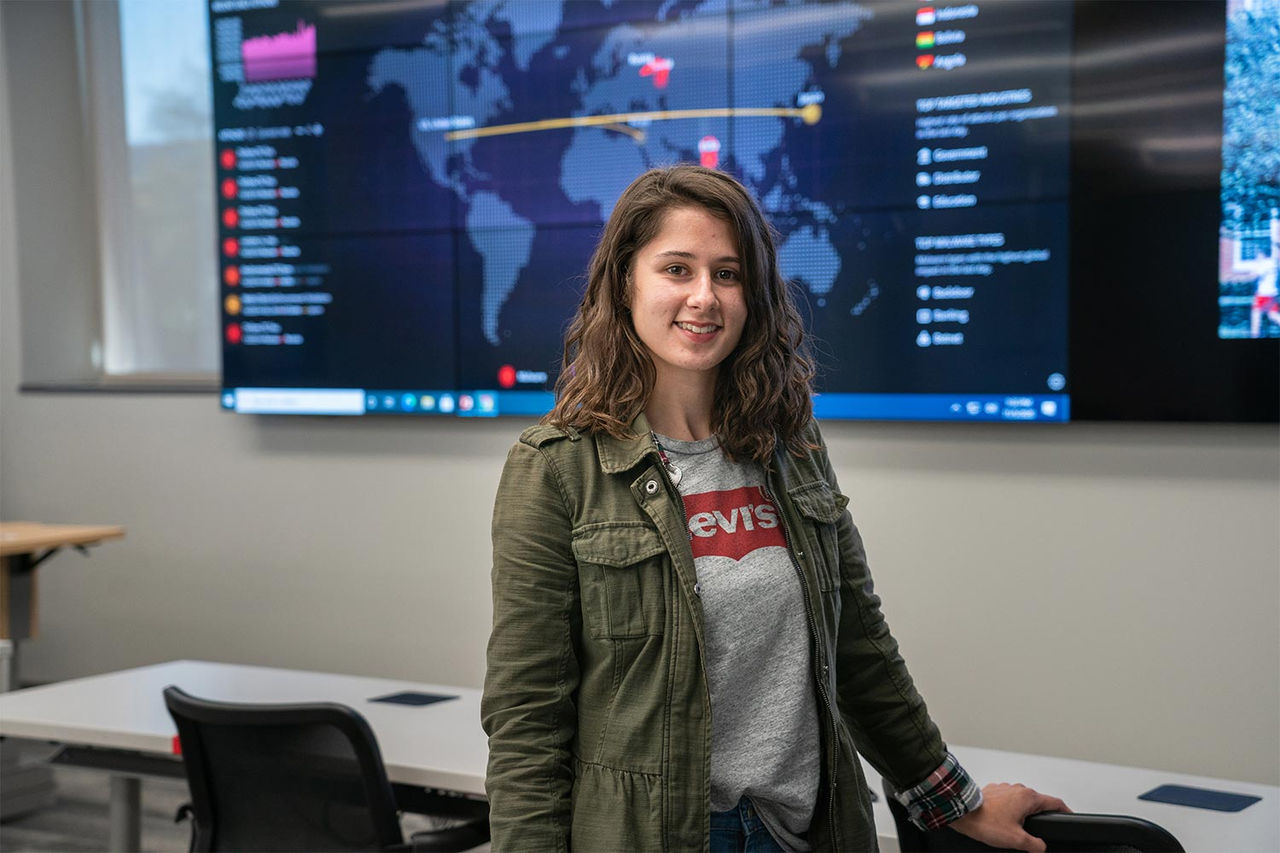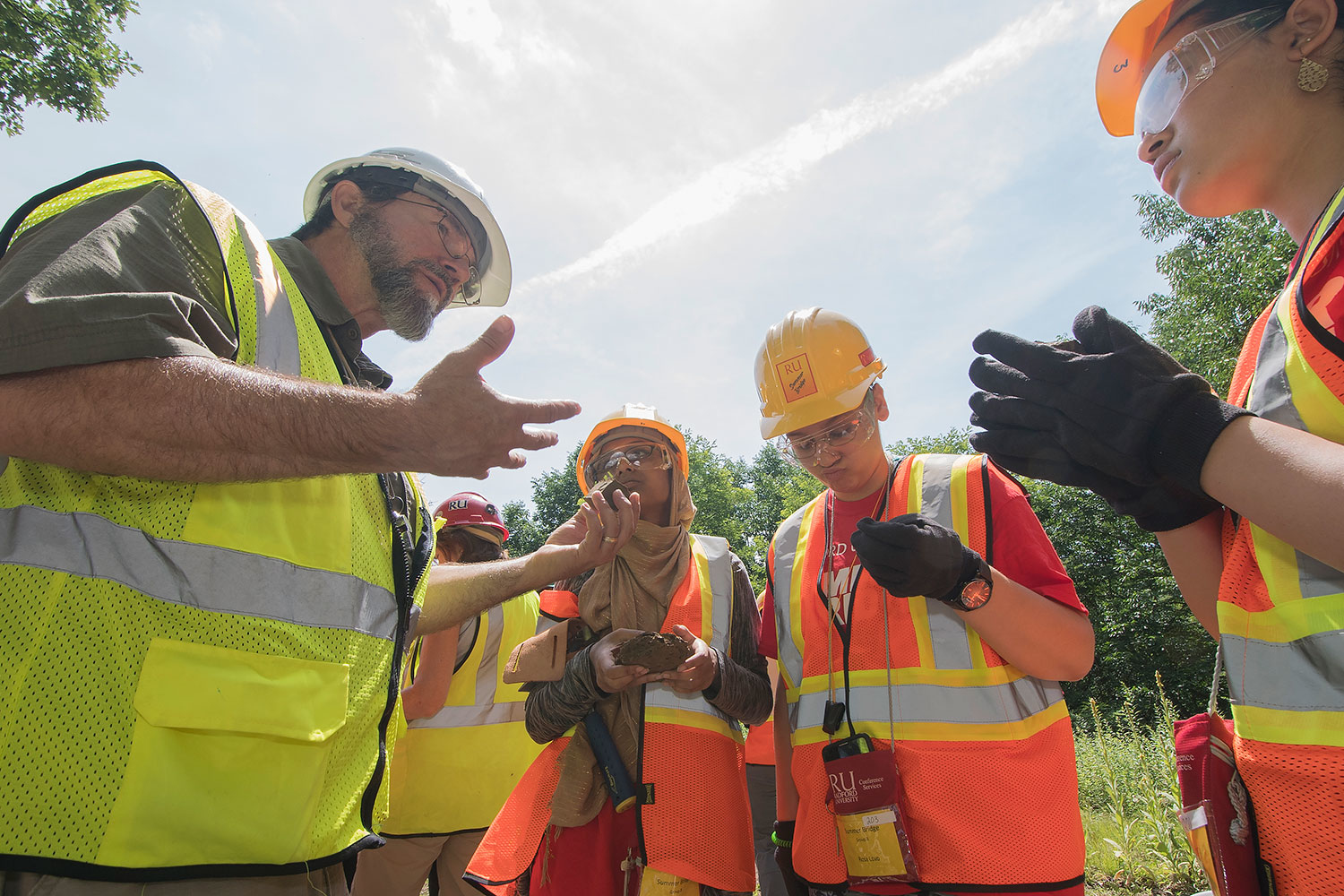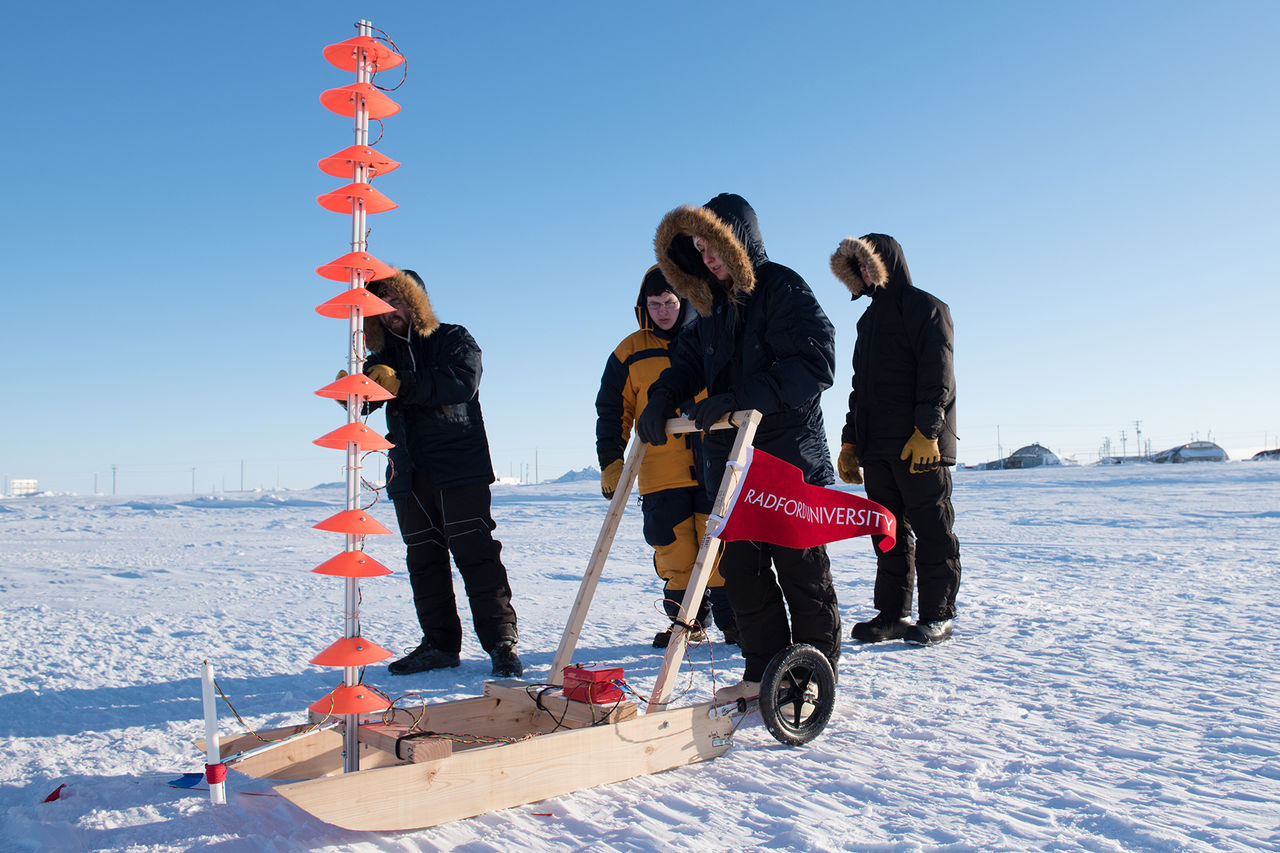Radford University
Physics
- Degree Type
-
- Bachelor of Science
- Location
-
- Main Campus in Radford, VA
- Format
-
- In-Person
Overview
Physics is essential to understanding our modern technological society and is the foundation for all the natural sciences. The problem-solving skills learned in physics can be applied everywhere on scales from subatomic particles to the entire universe. Graduates will gain real-world research experience within their courses and have additional opportunities to work on research with a faculty member serving as a mentor.
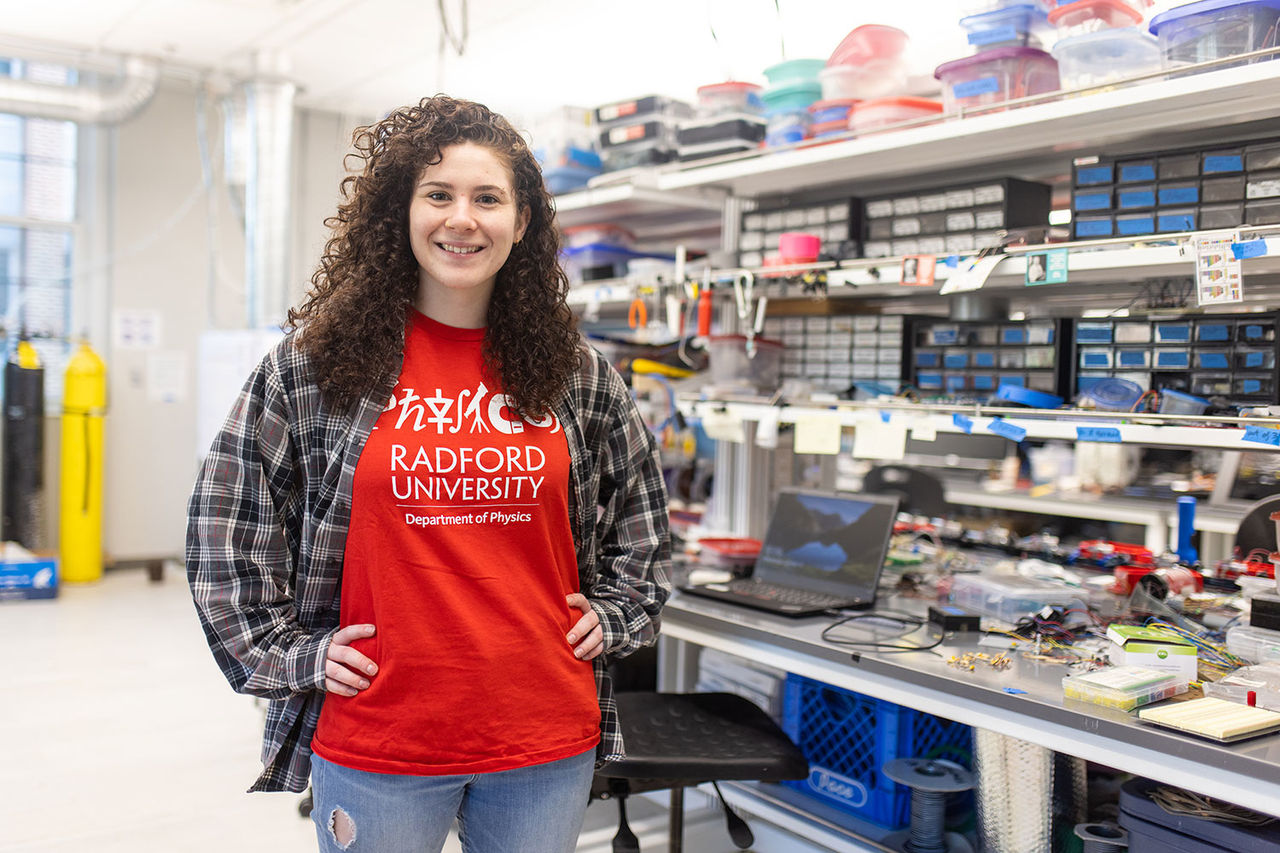
Experimental and Theoretical Physics Concentration
This concentration is designed to prepare students for either graduate study in physics or engineering, as well as to enter the workforce with a very adaptable background in all areas that use physics. This concentration leads to a well-rounded graduate who is able to succeed in so many technical fields that may or may not have "physics" in the title.
Biophysics Concentration
The Biophysics Concentration is the first of its kind in the state of Virginia. This rigorous concentration is for those who wish to apply physics to health-related fields. In addition to the typical physics and math classes, students also take 19 hours in Chemistry and 16 hours in Biology. Students are encouraged to work with their advisors to set up Independent Study classes that apply physics to various biophysical problems.
Astrophysics Concentration
The Astrophysics Concentration has students to take classes such as our advanced astronomy classes (both observational and theoretical), our Atmospheric Physics class, and our geophysics class. This concentration is great for launching you into further study and/or research in astronomy and astrophysics. It's also a concentration that prepares you for a number of careers with your Bachelor's degree due to the emphasis on applied data processing in this concentration. This also prepares you for a career in fields such as applied physics, engineering, and others.
Physics Education Concentration
The Physics Education Concentration requires the traditional year of introductory physics, along with a core group of intermediate physics courses. This allows for flexibility for students who want to take their physics degree into a teaching career. Students who start this concentration their freshman year can complete the physics requirements as well as receive their teaching certification within their 4 years at Radford.
Why Study Physics at Radford?
- We offer concentrations in astrophysics, biophysics, experimental and theoretical physics, and physics education.
- Our small department size and outstanding student-to-faculty ratio give students the opportunity for one-on-one work with faculty mentors in more informal settings that are not possible at larger universities.
- Every student will gain direct research experience in the curriculum and gain skills that both employers and graduate programs desire from applicants.
- Many of our majors are involved in research at a level that is not possible at larger universities.
- Facilities and equipment include an observatory, wind tunnel, atomic force microscope, scanning tunneling microscope, graphene deposition system, ground-penetrating radar planetarium, and other equipment.
- We have a unique biannual year-long Alaska research experience where students are the drivers of the research with close faculty mentoring.
Careers and Internships
Approximately 33% of physics majors get jobs in engineering when they go directly into a job, and over 40% go into some STEM career.
Starting salaries in the private section for physics degree recipients are well above the national average at all levels.
Physics majors score near the top of the tests determining entry into diverse fields such as medicine (MCAT, see below) and law (LSAT). According to the American Institute of Physics Statistics Division, 73% of physics majors who applied to law school in 2021 were accepted.
Opportunities for Physics students at Radford
Every other year, Dr. Rhett Herman takes a group of students to the north coast of Alaska during spring break to undertake research projects of their own design. Students design and build their own sensors to collect data from the extreme Arctic environment including ice seismicity, CO2 levels, and radiative heat transfer in the sea ice. Students not only gain science and engineering skills rarely seen at an undergraduate level, but also work under the awe-inspiring aurorae in an environment that few experience.
After they return, students present their unique research in poster or oral formats at a campus-wide research forum. The following fall, some of these students present their work at the Fall Meeting of the American Geophysical Union, the world’s largest gathering of earth and space scientists (~25,000 attendees). At this meeting, Radford students have been offered direct graduate school positions, research jobs, and industry positions.
The SPS organizes yearly weekend-long research trips to the Green Bank Observatory at Green Bank, WV. They participate in numerous science outreach activities that showcase physics to all ages. They are a tight-knit group that supports each other as they advance in their curriculum and their careers.
Admissions Requirements
No special admissions requirements beyond general admission to the university.
Related Programs

-
50 students in our program
50
students in our program
-
1/3 of students go onto postgraduate study on average
1/3 of students
go onto postgraduate study on average
(usually in physics or astrophysics)
-
1/3 of graduates go right into the workforce on average
1/3 of graduates
go right into the workforce on average
(usually in an engineering field)
-
10% of our students held a research fellowship
10% of our students
held a research fellowship
(summer 2023)
Classroom at the top of the world
Our program ensures that all students have the opportunity to engage in research and gain the skills needed for post-graduate studies or entering the workforce. These include the ability to model physical systems, experimental design, and developing technical. Practical lab skills will also be gained including machining, CNC machining, laser cutting, analysis, and visualization of data. Our students learn inside and outside of traditional classroom settings!
The Physics Program has dedicated professors who are truly invested in the improvement of their students. With my professors, I have traveled to Nashville to observe the total solar eclipse for the Citizen CATE Experiment, and more recently I went to Alaska to conduct research with the equipment I built.
Ryan Fry '19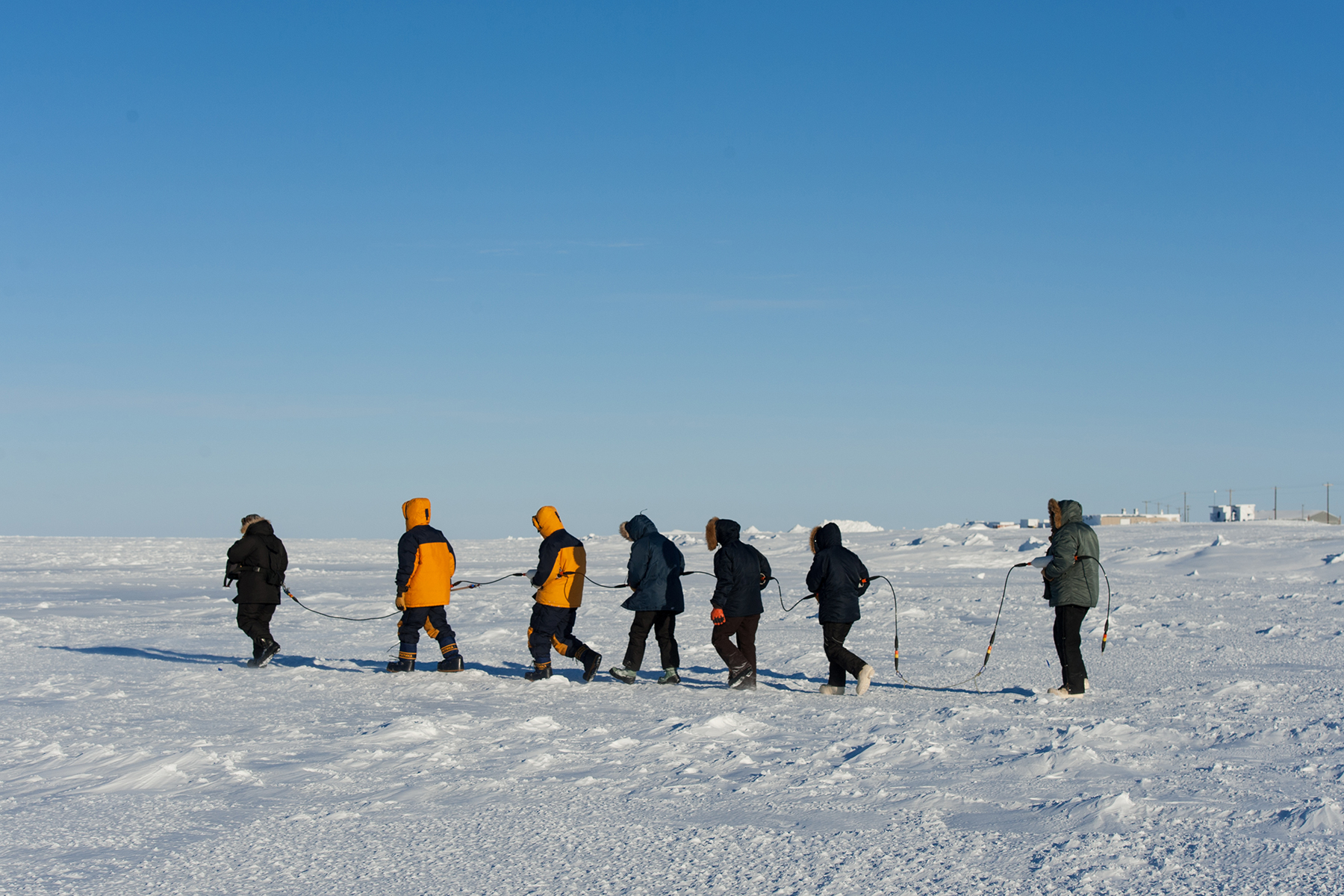
Ready to Study at Radford?
We want to get to know you better and we are excited that you are ready to take your next step and learn more about us. We are here to help you and look forward to working with you during your college search process.
